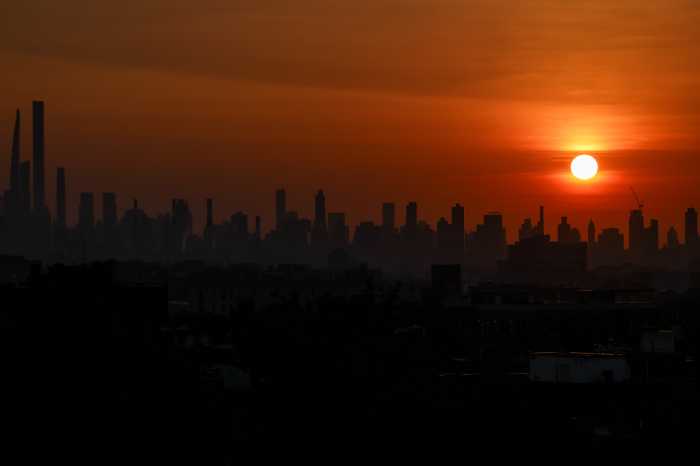BY ANDREW BERMAN | The mantra from the New York University administration throughout the public approval process for the school’s massive expansion proposal was “We’re making our plans transparent and predictable.” Even if you didn’t like the university’s overwhelming proposal, its argument went, at least you knew exactly what it was planning.
Apparently, the N.Y.U. administration defines “transparent” and “predictable” a little differently than most of the rest of us.
Literally within days of getting its final approval from the City Council to build more than 2 million square feet in the heart of Greenwich Village, N.Y.U. filed plans for an additional project it had never previously disclosed, with open-ended and deeply troubling implications for Noho and Soho.
N.Y.U. is seeking a zoning variance to allow it to place physics labs, classrooms and other facilities in 726 Broadway, located at Waverly Place in the Noho Historic District. N.Y.U. has long had a presence in the building, and it was well known it had future plans for the building. But what the university never revealed was that these plans would violate the special zoning restrictions for Noho and Soho, require a precedent-setting zoning variance, and involve the addition of a highly intrusive, four-story mechanical penthouse atop the building.
Now, just to be clear, no one is surprised that the N.Y.U. administration lied during the public review process — it’s certainly not the first time N.Y.U. has done so to help get a plan approved. What is more surprising is how brazen it has been about it, as well as the lack of response from public officials to whom the university administration (at least ostensibly) lied, and who approved N.Y.U.’s plans.
N.Y.U.’s application for a variance from the zoning restrictions for the site is now before New York City’s Board of Standards and Appeals, which will ultimately decide if it is granted. And while the Greenwich Village Society for Historic Preservation, the Noho Neighborhood Association, the Soho Alliance, Community Board 2, Assemblymember Deborah Glick and several N.Y.U. professors have spoken out against the variance, there has been no word from any of the entities who approved N.Y.U.’s massive expansion plan. These include the City Planning Commission, Borough President Scott Stringer and the City Council (among whom only Charles Barron voted against the plan) — all of whom routinely weigh in on variance applications. By contrast, at the Community Board 2 hearing on the variance proposal, several N.Y.U. professors showed up to oppose the plan, saying the facilities N.Y.U. claimed it needed at 726 Broadway were exactly the same facilities the university told city officials it needed a few blocks away as part of the massive, 2 million-square-foot expansion plan which the officials had already approved.
There is more than just deceit involved here. In spite of their proximity to N.Y.U., Noho and Soho have relatively few N.Y.U. facilities. Given the university’s seemingly boundless appetite for expansion and the ease with which it could seemingly gobble up much of these neighborhoods, this — the lack of N.Y.U.’s presence — may seem like inexplicable good fortune for the community. But it’s no coincidence. There is, in fact, a very good reason behind the conditions as they exist today.
The special zoning created for Noho and Soho in the 1970s prohibits most types of university uses, including dormitories and classrooms. For this reason, N.Y.U. has never been able to expand much within these small but very distinctive neighborhoods located at its doorstep.
That may all change soon. In seeking the variance from the B.S.A. for 726 Broadway, N.Y.U. is asking that this excluded class of university uses be allowed into the neighborhood. The university’s argument? It has no other place it can put these uses, and — to hear the university tell it — they absolutely have to be right next to N.Y.U.’s other existing facilities.
If the B.S.A. accepts this argument, the firewall that has kept Noho and Soho relatively free from the N.Y.U. expansion onslaught will be destroyed. You can guess what the future will then hold for these neighborhoods.
But the concerns about N.Y.U.’s proposed variance for 726 Broadway extend beyond just these issues of precedent. Neighbors have expressed very real worries about the health effects of allowing the university’s physics labs into the middle of an area with many residents, as well as the fact that the plan requires N.Y.U. to build a mechanical penthouse with ventilation equipment equal in size to a four-story building atop the existing structure. In addition to health concerns, this rooftop addition would have a jarring and very visible negative impact upon the hard-fought-for Noho Historic District.
So the N.Y.U. administration is up to its old games again, with only the mayor’s appointees on the B.S.A. standing between N.Y.U. and the floodgates protecting Noho and Soho. The outlook? Perhaps not as rosy as one would hope. At the hearing on the application, the B.S.A. chairperson openly complained that she could not understand why so many people were opposed to this variance (the B.S.A. had received scores of letters opposing the application via e-mail); why we thought it would change the character of the neighborhood; and why we felt N.Y.U. had been dishonest.
And the B.S.A. vice chairperson questioned why we thought the board could ask N.Y.U. to prove its claim that the variance it was requesting was necessary, or that reasonable alternatives did not exist, saying that the law did not explicitly authorize the B.S.A. to do so.
A decision on this case, and the fate of Noho and Soho, is expected soon.
Berman is executive director, Greenwich Village Society for Historic Preservation





































